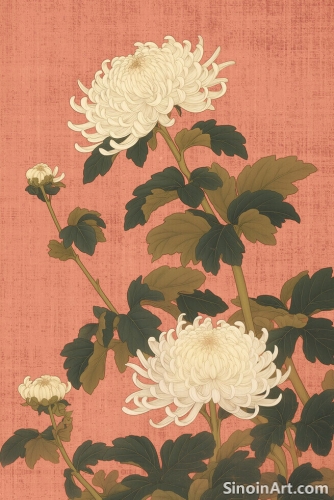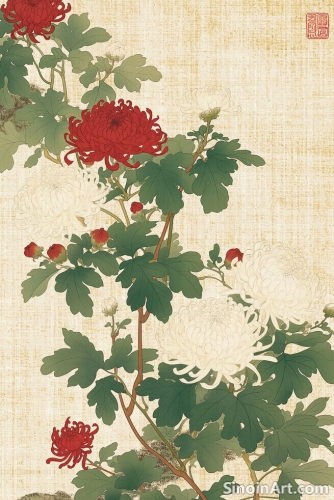The Future of Gongbi: Digital Tools and Traditional Techniques
|
The future of Gongbi painting lies in the intersection of traditional techniques and modern digital tools. While the core principles of Gongbi—meticulous linework and delicate color layering—remain central, contemporary artists are increasingly exploring how digital technology can enhance their creative process and expand the reach of this traditional art form. This careful integration of modern technology will help the art form thrive for future generations.  Digital tools can aid in the creation process, providing artists with new ways to sketch, outline, and plan their compositions. Some artists utilize tablets and digital software to create a detailed underdrawing before beginning the process of painting. The digital tools help to speed up the planning process, but do not replace the traditional methods of creation.  Digital technology can also facilitate the sharing and dissemination of Gongbi artworks, allowing artists to reach a global audience and connect with collectors from around the world. The use of online platforms and digital media helps to make the art form more accessible to a wider audience.  Some artists are exploring the use of digital printing techniques to create high-quality reproductions of their work, making Gongbi art more accessible to those who might not be able to acquire an original piece. The reproduction of the works helps to spread the influence and impact of the art form. However, it's important to note that technology is not replacing traditional skills; rather, it is enhancing the traditional process and allowing artists to explore new possibilities. The traditional skills are the foundation for all innovation, and the use of technology simply helps to enhance and support these practices. The blending of tradition and technology in Gongbi painting offers exciting possibilities for the future of the art form, ensuring that it remains both relevant and vibrant for generations to come. The blending of these two approaches ensures that the art form will continue to evolve and thrive in the future. |
Tag : Digital art tools, Gongbi technology, modern art techniques, blending art styles, future of painting
Related information
- Gongbi Painting Throughout History: From Courts to Modern Studios
- Gongbi Painting and the Art of Observation
- The Use of White Space in Gongbi Composition
- Gongbi and the Depiction of Architecture
- Gongbi Painting and the Concept of "Qi Yun Sheng Dong"
A historical overview of Gongbi painting, tracing its development from the Han dynasty to the present day, highlighting key periods and artists.
Explores the significance of observation in Gongbi painting, highlighting its role in capturing detailed forms and understanding the subject's essence.
This article explores the importance of white space in Gongbi composition, highlighting its role in defining the main subject, creating depth, contributing to overall balance, and reflecting the philosophical principles of emptiness and the interplay of yin and yang.
This article explores the depiction of architecture in Gongbi painting, highlighting the meticulous detail, historical accuracy, use of perspective, and interplay of light and shadow, showcasing how this art form captures both the physical appearance and cultural significance of buildings.
This article explores the significance of “Qi Yun Sheng Dong” (spirit resonance and lifelike movement) in Gongbi painting, highlighting the artist’s pursuit of capturing the essence and vital energy of the subject matter beyond mere visual representation.